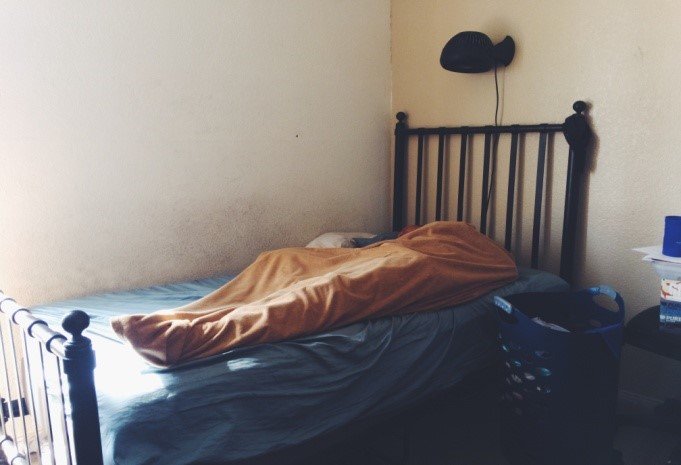Living with depression or depressive disorders can be debilitating.
Low motivation, low self-worth, and hopelessness are just some of the commonly-known effects of depression preventing many people from living their life in a functioning way.
Depressive disorders are experienced in a unique way for everyone. But it’s important to capture some symptoms to distinguish one disorder from another. With depressive disorders, it is also very important to mention that there may be other factors in play that are affecting your mood and or energy levels.
We are all human and go through difficult times and this may contribute to feeling low. But this does not mean you have depression. Here are examples of a life situation that could affect you right now:
- Grief: you could have recently lost a dear friend or family member
- Loss of job or change in position in life like losing financial stability
- A change in life circumstance eg all the children have left the family home
Here are some other factors that could be affecting you outside of having depression:
- Alcohol and other drug influence
- Diet and physical health issues
- Sleep issues
- Another mental health issue that isn’t depression eg schizophrenia
A caution: The ‘diagnoses box’
The diagnosis box needs to be raised because, for some people, a diagnosis and being placed in certain criteria can be positive. However for others, it can be negative. For some it’s a relief that what they are going through has a ‘name for it‘ and therefore they can talk about it more easily, identify triggers and what works, and start working on it. For others, the diagnosis box is too small, confined, and feels too clinical and labelling.
Historically some patients were named after their diagnoses – as in, “there goes the depressed person” – thus de-identifying the person and completely disregarding them as human first. In our work, we often use the word ‘experience’ because how you deal with, work through, and label things may be completely different to someone else. That is okay.
Depressive disorders
1. Major Depressive Disorder
Major depressive disorder is also called major depression, clinical depression, unipolar depression, or sometimes just depression. It is often the form that people are most familiar with, and as professionals, is a form we most frequently treat.
As many as 1 in 4 women, and 1 in 6 men will experience this form of depression at some point in their lives. Members of the LGBTQIA+ community and other marginalised groups often experience even higher rates of depression. Although it can affect people from adolescence through to old age, the median age of presentation is around early to mid-thirties.
Contributing Factors to Major Depressive Disorder
While there are a number of various factors the can contribute to major depressive disorder, current research indicates genetics may be the primary factor. People who have a first-degree relative (parents, siblings, offspring) with depression are three times more likely to experience depression when compared to the general population.
Other factors include socioeconomic factors, personality, past trauma, and recent or chronic stress. Depression often coincides with other physical or mental health conditions, and if frequently seen in individuals with a chronic condition, particularly when chronic pain is present.
Major depressive disorder has a fairly standard presentation, which includes feelings of sadness, loss of motivation, no longer enjoying activities that were once enjoyable, and often other general symptoms. These feelings are experienced on most days over the previous fortnight, and can last for months, or even years. Importantly, these symptoms interfere with normal functioning in all areas of a person’s life, including with respect to work, socialising and life at home.
Major depression is also the best understood form of depression, and is often effectively treated through a combination of antidepressant medication and/or psychological therapy. Upwards of 80% of individuals with depression who seek assistance from a GP or a mental health counsellor show improvement within six weeks, although full recovery is dependent on a number of factors, including the severity of symptoms.
Criteria for Major Depressive Disorder
The specific DSM-5 criteria for major depressive disorder are outlined below.
At least 5 of the following symptoms have to have been present during the same 2-week period (and at least 1 of the symptoms must be diminished interest/pleasure or depressed mood):
- Depressed mood: For children and adolescents, this can also be an irritable mood
- Diminished interest or loss of pleasure in almost all activities (anhedonia)
- Significant weight change or appetite disturbance: For children, this can be failure to achieve expected weight gain
- Sleep disturbance (insomnia or hypersomnia)
- Psychomotor agitation or retardation
- Fatigue or loss of energy
- Feelings of worthlessness
- Diminished ability to think or concentrate; indecisiveness
- Recurrent thoughts of death, recurrent suicidal ideation without a specific plan, or a suicide attempt or specific plan for taking one’s life
2. Seasonal Affective Disorder
Seasonal affective disorder (or SAD), describes a particular form of depression that occurs in the winter months. It has a predictable onset, typically in the colder months with reduced daylight hours. Although the full symptoms of depression due to SAD are uncommon in Australia, a number of people experience a mild form of the condition.
There is a lot of research into the specific causes of SAD, but most scientists agree the lack of sunlight during the winter months results in decreased production of an important neurohormone, called melatonin. This neurohormone is the basis of out circadian rhythm, and is important for proper functioning of the hypothalamus, the major hormonal and emotional regulator of the brain. This can have implications on all aspects of normal functioning, including emotional wellbeing.
Unlike other forms of depression, the prescribed treatment of SAD is to get outside more. There are some simple changes you can make to your daily life that can prevent or assist in treatment of SAD. These include going outside more often and getting more sunlight on your skin, avoiding alcohol and making sure you are getting enough sleep.
3. Bi Polar
Read more about Bi Polar Type 1, here. And Bi Polar Type 2, here. And how to identify them, here.
4. Post Natal and Antenatal Depression
The period of time leading up to, and in the months following the birth of a new baby can be incredibly difficult for new and expectant mothers. Immediately before, there are there a number of rapid hormonal changes in a short period of time. There is also the struggle of meeting expectations, and finding a new identity as a mother. These can culminate into what is known as ‘baby blues’, and is experienced by up to 80% of new mothers. These ‘baby blues’ typically last for only a few days, or up to a week. Therefore it is not considered to be depression.
Around 16% of new mothers experience postnatal depression within the first year of their child’s life. As with other forms of depression, the symptoms include low mood, low motivation and loss of enjoyment for a period of more than two weeks. A very common symptom is feelings of guilt, specifically feeling as though they aren’t a good mother or partner. These very complex emotions can impact on the mother’s wellbeing. This can also affect her relationship with her baby, her partner, or other members of the family.
Causes of post natal and antenatal depression can be complex
The specific causes can be complex, and often involve complex interactions between a number of factors. Sometimes the stress can result in depression. Women are typically at risk of developing antenatal or postnatal depression within the first few months. Although the development of depression at any period within the first year following birth is considered to be postnatal depression.
Postnatal depression is often treated similarly to other forms of depression, but with an increased focus on building support from family and friends. Typically, therapy involves a combination of supportive counselling and therapy. And in moderate to severe cases, antidepressant medications may be used.
The DSM-5 does not recognise post-natal depression as a separate condition from a major depressive disorder, and the criteria for diagnosis are outlined below.
At least 5 of the following symptoms have to have been present during the same 2-week period (and at least 1 of the symptoms must be diminished interest/pleasure or depressed mood) [2] :
- Depressed mood: For children and adolescents, this can also be an irritable mood
- Diminished interest or loss of pleasure in almost all activities (anhedonia)
- Significant weight change or appetite disturbance: For children, this can be a failure to achieve expected weight gain
- Sleep disturbance (insomnia or hypersomnia)
- Psychomotor agitation or retardation
- Fatigue or loss of energy
- Feelings of worthlessness
- Diminished ability to think or concentrate; indecisiveness
- Recurrent thoughts of death, recurrent suicidal ideation without a specific plan, or a suicide attempt or specific plan to take one’s life
Recovery from depression
Despite some myths, it is possible to recover from depression and live a very satisfying and fulfilling life. In fact, around 90% of people do find improvement with therapy. Some people recover spontaneously, without any medication or therapy, although these cases are uncommon. Most people require some form of antidepressant medication, or counselling, or both.
Recovery is harder than just taking a tablet once or twice a day. It is important to undergo certain positive lifestyle changes. Picking up new healthy habits gives you the best chance at complete recovery. Essentially, it is an exercise in retraining your brain to work in a different way. It is also not something that someone else can do for you.
At Safe Place Therapy, we aim to give you the tools you need. We can help to address your depression and empower you to seize recovery for yourself.
People who have had depression in the past are also likely to relapse at some point in the future. Recognise the signs that indicate you may be going into a relapse (feeling low, feelings of guilt, loss of joy). It is important, so that you can get help early, and avoid a complete relapse.
Recovery is possible and Safe Place Therapy wants to work with you towards better mental health.



